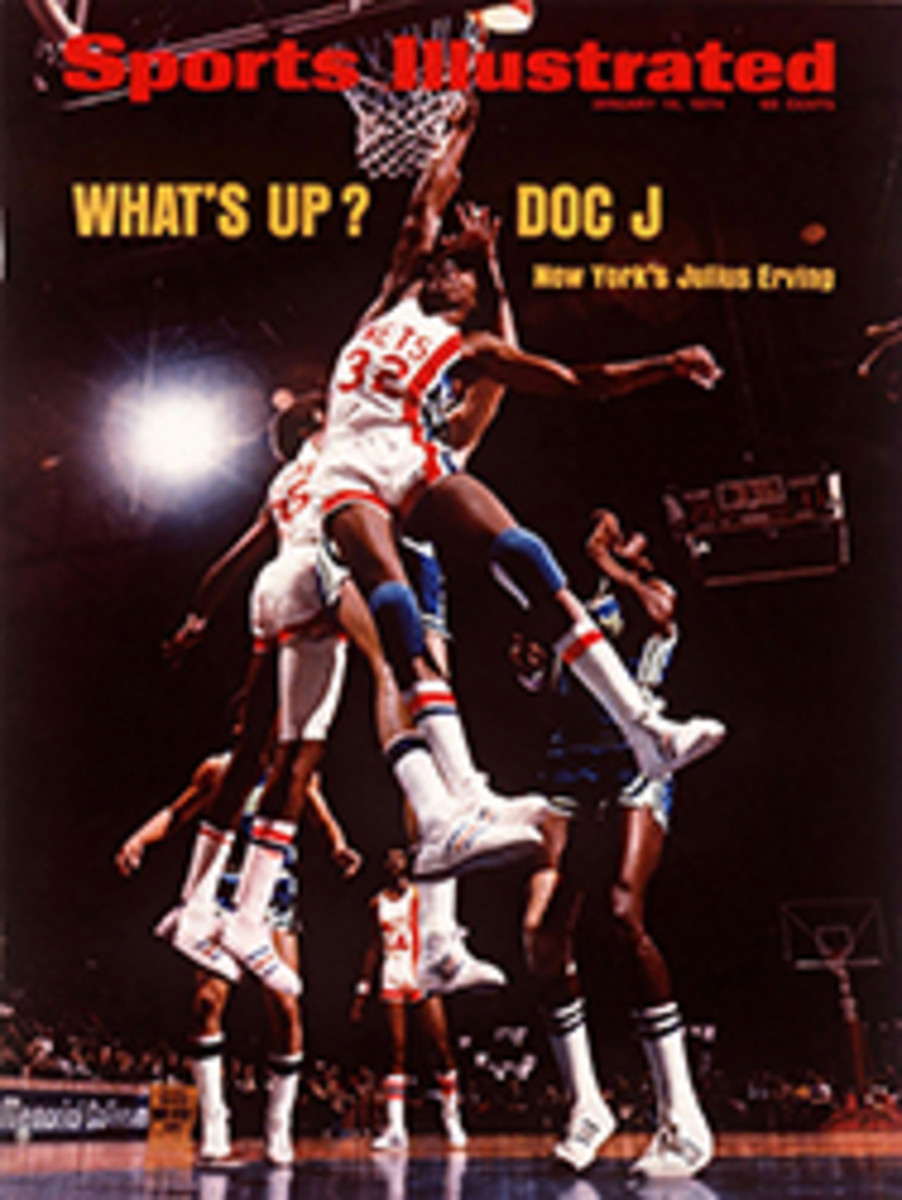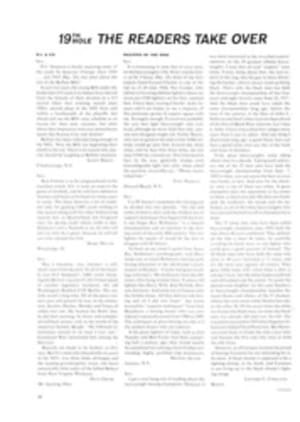
YOU CAN'T PROGRAM THE HUMAN ELEMENT
Not long ago a Swiss newspaper, trying to determine the fallibility quotient of the modern computer, stuffed one with all the information available on transportation and population in the years just before the development of the automobile. The computer arrived at the conclusion that by 1980 the streets of the major cities of the world would be six feet deep in horse manure.
The computer that arrived at the conclusion that the Vikings will be buried six feet—or nine points—by the Dolphins made its decision on better feed-in. But there are factors that still do not fit comfortably into a computer, and most of these favor Minnesota.
The Dolphins, a team built on precision performance and the law of averages, might have been put together by a computer; certainly it is a team easily understood and interpreted by one. Most of the ponderables point to a Miami victory Sunday. But some things cannot be programmed, such as Garo Yepremian's feeble pass attempt in last year's Super Bowl, which gave the Washington Redskins their only touchdown and Bud Goode's computer its exact margin of victory—seven points.
Nor could any computer have taken into account Carl Eller's emotional display in the locker room at the half of the Viking playoff game with Washington three weeks ago. Eller knocked down a blackboard, excoriated his teammates and inspired them to demolish the Redskins. "It was a surprise," said Minnesota Coach Bud Grant. "It didn't last long, but it worked."
And the single most difficult player to run through a computer is Fran Tarkenton, the Viking quarterback. In playoff games against Washington and Dallas he was as unpredictable as ever, scrambling away from a heavy rush to complete key passes. One of those completions—to John Gilliam for a big touchdown against the Redskins—came on a scramble that would have burned out the memory banks in any computer. Tarkenton ran right, left and right again, finally lofting a soft, perfect pass into the back of the end zone to Gilliam, who had twice broken his pass pattern.
Something else a computer might have overlooked was Grant's game plan, designed to negate the abilities of Lee Roy Jordan, the Dallas middle linebacker who makes most of the tackles for the club on running plays. The plan was a masterpiece of misdirection, just the kind of thing to foul up a computer's predictions, which are based on the laws of probability. Incidentally, for years Dallas has fed game analyses into its own computer to turn up frequencies on offense and defense. The Vikings invalidated those frequencies by reversing the keys upon which they were based.
When the Cowboys defeated Miami in the 1972 Super Bowl, they did it by cutting off Nick Buoniconti, a middle linebacker who is even smaller than Jordan and like him mobile and dependent on quick reactions and the protection of the defensive line for his effectiveness. If the Vikings could handle Jordan and confuse the machinelike efficiency of the Dallas defense, it is conceivable to noncomputer reasoning to feel they may be able to do the same thing to Miami.
Certainly there is little to choose physically between the teams, whose key people are shown on the following pages. Neither is likely to overpower the other, although if the game were to turn on pure physical strength, Minnesota has the edge where it counts most—in both lines. The Purple People Eaters have been maligned this year because they were a bit leaky against the run, but they often have concentrated on the pass rush, which creates openings for the ground game. Against Dallas, they whipsawed a good offensive line both ways.
Finally, there is the devious plotting of Grant and his assistants, which completely befuddled Dallas. The Dolphins may not be so easy to fool, but you can depend upon Minnesota to come up with variations on its accustomed themes designed to upset the most sophisticated defense or the most advanced computer.
Computers are only as good as the information fed them—horse manure in, horse manure out. The human element, as often as not, decides football games, especially big ones like the Super Bowl. Remember brash Joe Namath and the Jets the year they upset Baltimore?
The Broadway Joe of 1974 could be Fran the Man. Vikes by four.
Griese rarely calls his own number, but this draw was good for 17 yards in the AFC title game, and could work against the Vikes' rush.
Warfield can turn short passes into long gains, as he did by juking Nemiah Wilson. And what's thrown up he brings down (below).
Miami can win—and has won—without going to Warfield, but for Minnesota to beat the Dolphins it needs at least one big play from John Gilliam.
Foreman gives the Vikes unaccustomed outside speed, while Reed (below) is more dependable than before. Both backs can catch the ball, too.
This can't be said for Morris, who's replaced on passing downs, but Merc takes off with new finesse up the middle, stamping ground of...
...Larry Csonka, here in noble repose in Oakland's end zone. Miami runs the same old plays. The Vikes will be looking for Zonk's counter.
Jeff Wright, Eller and Nate Wright collar Robert Newhouse. Statistically undistinguished, Minnesota's defense excels inside the 20.
NFL Defensive Player of the Year Dick Anderson (40) knocks the ball free from Marv Hubbard on a key fourth-and-one play in the AFC title game.
Minnesota's front four has 41 years' pro experience. It counts, as page demonstrates in this sly attempt to strip the ball from Larry Brown.
Gang tackling is the mark of the furiously pursuing Dolphin defense. Below, Stanfill, Den Herder (83) and Buoniconti swarm all over Charlie Smith.
The 53 Defense is named for Bob Matheson—here he's sacked Bengal Ken Anderson—who plays end or linebacker on third-and-long.
It's up to him—Francis Asbury Etc. No way Vikes win without Fran having a big day, but Miami's light, mobile line might chase him down.
FOURTEEN PHOTOS

